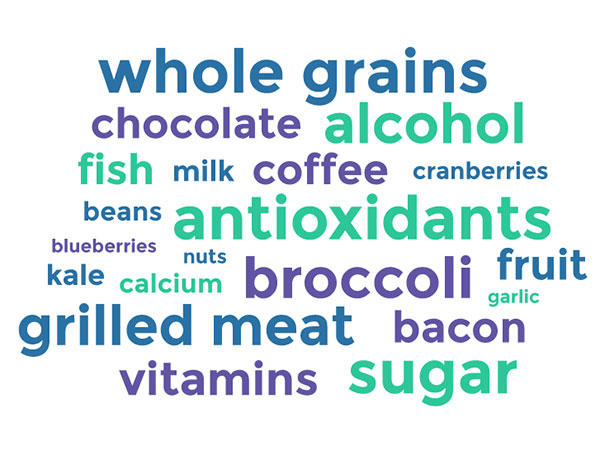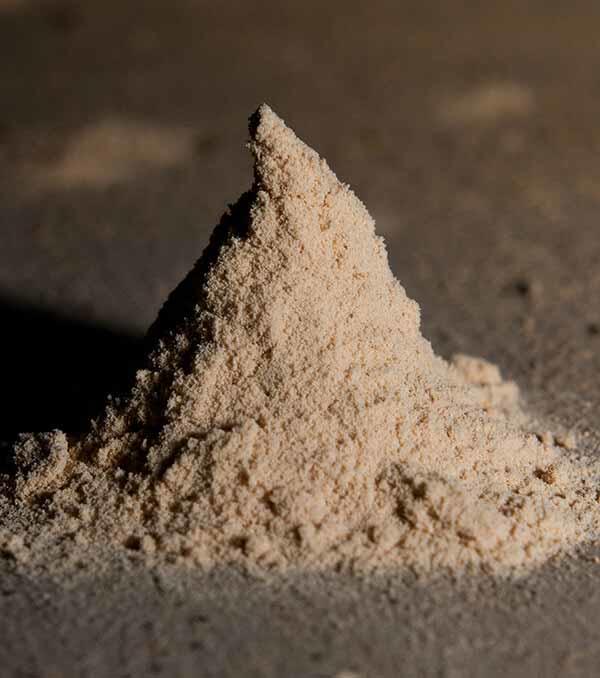Vitamin D and Cancer
What is vitamin D?
Vitamin D is a group of fat-soluble hormones and prohormones (substances that usually have little hormonal activity by themselves but that the body can turn into hormones) that help the body use calcium and phosphorus to make strong bones and teeth. These nutrients also perform many other important functions in the body, including reducing inflammation and controlling cell growth, as well as influencing neuromuscular and immune function and glucose metabolism.
People obtain vitamin D by making it naturally in sun-exposed skin and by consuming it in foods. The form that is made in skin is vitamin D3, or cholecalciferol. This form is also abundant in some foods, including fatty fish (salmon, trout, tuna, and mackerel), fish liver oil, liver, and eggs. Another form, vitamin D2, or ergocalciferol, is found in some plants and fungi. Vitamin D supplements may contain either form.
Both cholecalciferol and ergocalciferol are converted in the body to calcitriol, which is the active form of vitamin D. It works by binding to the vitamin D receptor (VDR) that is found in many tissues and cell types in the body.
Most people get at least some vitamin D through sunlight exposure, but they also obtain it from their diet and from supplements. Most of the vitamin D that people obtain from their diet comes from foods fortified with vitamin D, such as milk, juices, and breakfast cereals, and by eating the few foods that are rich in it.
How much vitamin D do people need?
The Institute of Medicine (IOM) of the National Academies has developed the following recommended daily intakes of vitamin D, assuming minimal sun exposure (1, 2), which are the basis for the recommendations in the Dietary Guidelines for Americans, 2020–2025:
- For those between 1 and 70 years of age, including women who are pregnant or lactating, the recommended dietary allowance (RDA) is 15 micrograms (μg) per day. Because 1 μg is equivalent to 40 International Units (IU), this RDA can also be expressed as 600 IU per day.
- For those 71 years or older, the RDA is 20 μg per day (800 IU per day).
- For infants, the IOM could not determine an RDA due to a lack of data. However, the IOM set an Adequate Intake level of 10 μg per day (400 IU per day), which should provide sufficient vitamin D.
It is important to remember that excessive intake of any nutrient, including vitamin D, can have harmful effects. Too much vitamin D can cause calcium to build up, which can lead to calcinosis (the deposit of calcium salts in soft tissues, such as the kidneys, heart, or lungs) and hypercalcemia (high blood levels of calcium). The current safe upper intake level of vitamin D for adults and children older than 8 years of age is 100 μg per day (4000 IU per day) (3). People who do not take vitamin D supplements are unlikely to have excessive vitamin D levels.
People who do not take supplements sometimes wonder if they should spend more time in the sun to boost their vitamin D levels. However, the IOM states that people should not try to increase vitamin D production by increasing their exposure to sunlight because doing so will also increase their risk of skin cancer (2).
For most people, a blood level of 25-hydroxyvitamin D of 50 nmol/L (20 ng/mL) or higher is considered adequate for bone and overall health. Levels below 30 nmol/L (12 ng/mL) are too low, or “deficient,” and might weaken your bones and affect your health in other ways. Levels above 125 nmol/L (50 ng/mL) are too high (3).
Although the average dietary intakes of vitamin D in the United States are below the guideline levels, data from the 2011–2014 National Health and Nutrition Examination Survey (NHANES) revealed that 73% of Americans had sufficient blood levels of vitamin D (4).
Why are cancer researchers studying a possible connection between vitamin D and cancer?
Studies of populations of people, also known as epidemiologic studies, along with laboratory experiments, have raised the possibility that vitamin D influences cancer risk and development.
Early epidemiologic research found that people living at southern latitudes, where levels of sunlight exposure are relatively high, were less likely to develop or die from certain cancers than people living at northern latitudes. Because exposure to sunlight leads to the production of vitamin D in the skin, researchers hypothesized that variation in vitamin D levels might account for those cancer associations.
In experimental studies of cancer cells and of tumors in rodents, vitamin D has been found to have several biological activities that might slow or prevent the development of cancer, including promoting cellular differentiation, decreasing cancer cell growth, stimulating cell death (apoptosis), reducing tumor blood vessel formation (angiogenesis), and decreasing tumor progression and metastasis (5–9). Vitamin D was also found to suppress a type of immune cell that normally prevents the immune system from responding strongly to cancer (10).
This kind of evidence led researchers to carry out studies in people, such as prospective observational studies and randomized controlled trials, to determine whether the blood level of vitamin D or the amount of vitamin D consumed are associated with the risk of developing or dying from cancer.
Does vitamin D prevent cancer or lower the risk of dying from cancer?
Researchers have conducted both observational studies and randomized controlled trials to look at possible links between someone’s vitamin D level or use of vitamin D supplements and their risk of developing or dying from cancer (11). Randomized trials are considered a stronger design because they control for the possibility that other differences between people, rather than their vitamin D status, explain associations seen in observational studies. However, vitamin supplementation trials are typically limited to testing one daily dosage, as compared with the measurement of a range of blood levels in observational studies.
Evidence from observational studies
Cancer risk. Observational studies have examined a number of individual cancer sites for possible associations of risk with vitamin D level. Higher vitamin D levels have been consistently associated with reduced risks of colorectal cancer (12) and, to a lesser extent, bladder cancer (13). Studies have consistently shown no association between vitamin D levels and risk of breast, lung, and several other, less common cancers (14–17). By contrast, opposite (i.e., harmful) associations of risk with higher blood vitamin D levels have been suggested for prostate cancer (18) and possibly pancreatic cancer (19, 20).
Cancer mortality. Possible associations between vitamin D status and cancer mortality have generally been studied for all cancers combined. Most meta-analyses (i.e., studies that combine multiple individual studies) of observational studies have found that lower serum vitamin D levels are associated with higher overall cancer mortality (11, 21–24). For example, a meta-analysis of 12 cohort studies found a 14% higher cancer mortality among people with the lowest 25-hydroxyvitamin D levels than among those with the highest levels (22). Similarly, an analysis of approximately 4,000 cancer cases within the Prostate, Lung, Colorectal, and Ovarian Cancer Screening Trial found a 17% lower cancer mortality among men and women in the highest category of vitamin D than in the lowest category (25).
Evidence from randomized controlled trials
Cancer risk. Most randomized controlled trials have found that vitamin D supplements, with or without calcium, do not reduce the risk of developing cancer overall or of developing specific cancers (11, 26–29). An evidence report prepared for the United States Preventive Serves Task Force (USPSTF) in its assessment of nutrient supplements to prevent cardiovascular disease or cancer found little or no benefit for vitamin D in preventing cancer, cardiovascular disease, and death (30).
For example, the early large randomized Women’s Health Initiative trial found that supplementation with 400 IU vitamin D plus 1000 mg calcium had no effect on the incidence of breast or colorectal cancer among postmenopausal women (31–33).
More recently, the largest trial of vitamin D supplementation, VITAL, assigned more than 25,000 participants aged 50 and over (men) or 55 and over (women) to receive a daily dose of 2000 IU vitamin D plus fish oil omega-3 fatty acids or of placebo. After 5 years of follow-up, the vitamin D/omega-3 group had the same overall cancer incidence as the placebo group (29). The incidence of breast, prostate, and colorectal cancer was also the same in both groups. Another large trial of vitamin D supplementation, ViDA, conducted among New Zealanders aged 50–84, also found no association between supplementation and the risk of cancer overall (34).
In addition, findings from several trials cast doubt on the idea that taking vitamin D supplements prevents the development of colorectal adenomas, which can become colorectal cancer. In the VITAL trial, people who took vitamin D supplements did not have a lower risk of colorectal adenomas or serrated polyps at 5 years of follow-up (35). An ancillary study of a randomized trial in US adults with prediabetes and overweight or obesity found that vitamin D supplementation was not associated with incident cancer or colorectal polyps (36). And in the Vitamin D/Calcium Polyp Prevention Study, which studied people who had had at least one adenoma removed during colonoscopy at the start of the study, taking a daily vitamin D supplement did not reduce the risk that adenomas would recur during the following 10 years (37).
Cancer mortality. Several randomized controlled trials have studied whether vitamin D supplements lowers the risk of death from cancer, with varying results (11, 27, 29, 38, 39). For example, in the VITAL trial, vitamin D did not reduce cancer deaths overall, although a mortality reduction was seen in analyses that excluded deaths in the first few years of follow-up (28). In the D-Health trial, which included Australians 60 years and older, a monthly dose of 60,000 IU vitamin D for 5 years also did not reduce cancer mortality (40).
However, a meta-analysis of 10 randomized controlled trials through 2018 (including the VITAL trial) found that vitamin D supplementation was associated with a slight (13%) reduction in cancer mortality over 3–10 years of follow-up (27). A meta-analysis of 21 randomized trials found no evidence that vitamin D supplementation was associated with reduced mortality from all causes combined or from cardiovascular disease (41).
Many participants in these trials had blood levels of vitamin D that are considered adequate for overall health. This has led to speculation that any effects of vitamin D supplementation on cancer mortality might be more evident in people with low vitamin D levels (42), and researchers are pursuing this question.
How is vitamin D being studied now in cancer research?
Clinical trials are being conducted to examine the potential benefit of adding vitamin D supplements to other treatments for people with cancer. For example, the phase 3 SOLARIS trial is testing whether adding high-dose vitamin D3 to chemotherapy and bevacizumab would extend the length of time patients with advanced or metastatic colorectal cancer live without their disease getting worse.
Researchers are also studying vitamin D analogs—chemicals with structures similar to that of vitamin D—which may have the anticancer activity of vitamin D but not the toxic effects of high doses (43). For example, ongoing clinical trials are testing both vitamin D and its analog paricalcitol alone or in combination with other treatments, including immunotherapy and chemotherapy, in patients with pancreatic cancer (44).
Another research question relates to the differing prevalence of vitamin D deficiency among racial/ethnic groups and whether these may contribute to some cancer disparities (45, 46). According to NHANES data for 2011–2014, the prevalence of vitamin D deficiency (defined as a serum 25-hydroxyvitamin D concentration of less than 30 nmol/L) among adults in the United States was 18% among non-Hispanic Black people, 2% among non-Hispanic White people, 8% among non-Hispanic Asian people, and 6% among Hispanic people (4). Black people are also less likely to use vitamin D supplements than White people (47).
Observational studies and investigations of biological mechanisms through which vitamin D status and supplementation influence cancer risk are ongoing. Also under study is whether any beneficial effects of vitamin D on cancer outcomes may be restricted to people who have certain genetic variants in genes that metabolize or transport vitamin D (48, 49). For example, a recent analysis of a US population found improved cancer survival primarily among women and men with a specific form of a vitamin D binding protein called GC (25).



